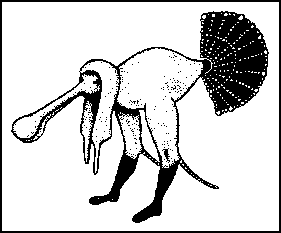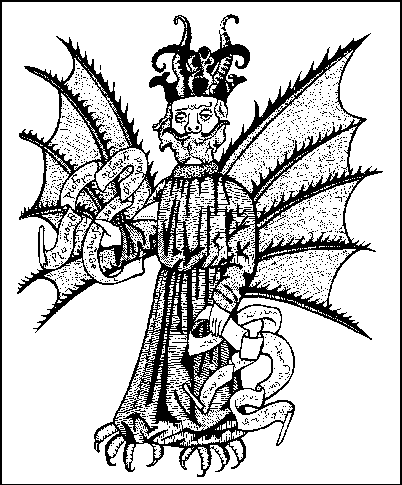Alice in
Wonderland,
and MAD
Magazine
Marshall McLuhan

If this, however, has been the motive behind all of our human technologies, it does not follow that we are prepared to accept the consequences. It helps to get one's bearings to see the process at work in remote times when work meant specialist servitude, and leisure alone meant a life of human dignity and involvement of the whole man.
The print in its clumsy woodcut-phase reveals a major aspect of language; namely, that words cannot bear sharp definition in daily use. When Descartes surveyed the philosophical scene at the beginning of the seventeenth century, he was appalled at the confusion of tongues and began to strive toward a reduction of philosophy to precise mathematical form. This striving for an irrelevant precision served only to exclude from philosophy most of the questions of philosophy; and that great kingdom of philosophy was soon parceled out into the wide range of uncommunicating sciences and specialties we know today. Intensity of stress on visual blueprinting and precision is an explosive force that fragments the world of power and knowledge alike.
The increasing precision and quantity of visual information transformed the print into a three-dimensional world of perspective and fixed point of view. Hieronymus Bosch, by means of paintings that interfused medieval forms in Renaissance space, told what it felt like to live straddled between the two worlds of the old and the new during this revolution. Simultaneously, Bosch provided the older kind of plastic, tactile image but placed it in the intense new visual perspective. He gave at once the older medieval idea of unique, discontinuous space, superimposed on the new idea of uniform, connected space. This he did with earnest nightmare intensity.
 Lewis Carroll took the nineteenth century into a dream world that was as startling as that of Bosch, but built on reverse principles. Alice in Wonderland offers as norm that continuous time and space that had created consternation in the Renaissance. Pervading this uniform Euclidean world of familiar space-and-time, Carroll drove a fantasia of discontinuous space-and-time that anticipated Kafka, Joyce, and Eliot. Carroll, the mathematical contemporary of Clerk Maxwell, was quite avant-garde enough to know about the non-Euclidean geometries coming into vogue in his time. He gave the confident Victorians a playful foretaste of Einsteinian time-and-space in Alice in Wonderland. Bosch had provided his era a foretaste of the new continuous time-and-space of uniform perspective. Bosch looked ahead to the modern world with horror, as Shakespeare did in King Lear, and as Pope did in The Dunciad. But Lewis Carroll greeted the electronic age of space-time with a cheer.
Lewis Carroll took the nineteenth century into a dream world that was as startling as that of Bosch, but built on reverse principles. Alice in Wonderland offers as norm that continuous time and space that had created consternation in the Renaissance. Pervading this uniform Euclidean world of familiar space-and-time, Carroll drove a fantasia of discontinuous space-and-time that anticipated Kafka, Joyce, and Eliot. Carroll, the mathematical contemporary of Clerk Maxwell, was quite avant-garde enough to know about the non-Euclidean geometries coming into vogue in his time. He gave the confident Victorians a playful foretaste of Einsteinian time-and-space in Alice in Wonderland. Bosch had provided his era a foretaste of the new continuous time-and-space of uniform perspective. Bosch looked ahead to the modern world with horror, as Shakespeare did in King Lear, and as Pope did in The Dunciad. But Lewis Carroll greeted the electronic age of space-time with a cheer.
Nigerians studying at American universities are sometimes asked to identify spatial relations. Confronted with objects in sunshine, they are often unable to indicate in which direction shadows will fall, for this involves casting into three-dimensional perspective. Thus sun, objects, and observer are experienced separately and regarded as independent of one another.
For medieval man, as for the native, space was not homogeneous and did not contain objects. Each thing made its own space, as it still does for the native (and equally for the modern physicist). Of course this does not mean that native artists do not relate things. They often contrive the most complicated, sophisticated configurations. Neither artist nor observer has the slightest trouble recognizing and interpreting the pattern, but only when it is a traditional one. If you begin to modify it, or translate it into another medium (three dimensions, for instance), the native fails to recognize it.
An anthropological film showed a Melanesian carver cutting out a decorated drum with such skill, coordination, and ease that the audience several times broke into applause --- it became a song, a ballet. But when the anthropologist asked the tribe to build crates to ship these carvings in, they struggled unsuccessfully for three days to make two planks intersect at a 90-degree angle, then gave up in frustration. They couldn't crate what they had created.
In the low definition world of the medieval woodcut, each object created its own space, and there was no rational connected space into which it must fit. As the retinal impression is intensified, objects cease to cohere in a space of their own making, and, instead, become "contained" in a uniform, continuous, and "rational" space. Relativity theory in 1905 announced the dissolution of uniform Newtonian space as an illusion or fiction, however useful. Einstein pronounced the doom of continuous or "rational" space, and the way was made clear for Picasso and the Marx brothers and MAD Magazine.
©1964, McGraw-Hill Book Co.